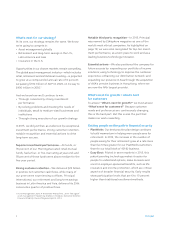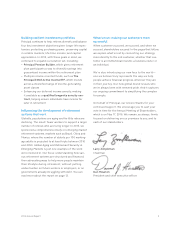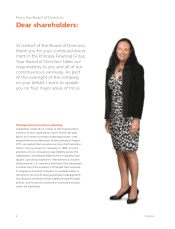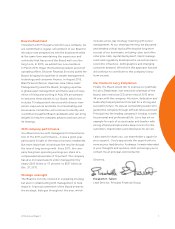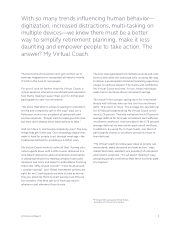Principal Financial Group 2015 Annual Report Download - page 15
Download and view the complete annual report
Please find page 15 of the 2015 Principal Financial Group annual report below. You can navigate through the pages in the report by either clicking on the pages listed below, or by using the keyword search tool below to find specific information within the annual report.
In partnership with the Global Aging Institute,
Principal uncovered groundbreaking new insights
to help ensure the financial security of a rapidly
growing segment of the world population.
When we ask “what’s next” for Principal, we’re not
just looking ahead to the next year. We’re looking for
meaningful steps we can take now to serve long-term
financial needs and create a stronger global economy
for our future generations.
One such important step in 2015 was the partnership
between Principal and the nonprofit Global Aging
Institute to develop the research report Global Aging
and Retirement Security in Emerging Markets:
Reassess ing the Role of Funded Pensions.
The report was commissioned to explore the challenge
of ensuring adequate and sustainable retirement sys-
tems in aging emerging markets—and protect the
financial security of people reaching retirement age
in the world’s developing countries.
“We’re a global expert in pensions, long-term savings,
and asset management, but it’s not enough to say
that,” says Luis Valdés, president & CEO of Principal
International. “We also have to influence governments,
regulators, lawmakers, and even competitors to create
the right conditions for developing the right solutions
for individuals and customers worldwide.”
In many emerging markets (including Brazil, China,
and Mexico), the percent of adults aged 65+ is pro-
jected to increase more than 200 percent in the com-
ing years. With declining fertility rates and rising life
expectancies, dependency ratios (elderly per 100
working-age adults) are projected to triple between
2010 and 2050 in Brazil, Chile, China, Indonesia and
Mexico—all countries with mandatory, private, funded
retirement programs.
1
As the report explores in detail, pay-as-you-go (or
“paygo”) pension systems—which fund retirement
benefits out of current revenues—require an increased
tax burden on workers, a reduction in promised
benefits, or some combination of both to remain
sustainable in an economy with fewer active workers
covering more retirees.
Renee Schaaf, senior vice president and chief operating
officer of Principal International, explained the need
for governments to offer public pension policies
that balance fiscal sustainability with adequate retire-
ment benefits.
“The balance between those two elements is greatly
impacted by trends in global aging,” Schaaf says. “One
of the key takeaways of the report is that fully funded
personal pension systems will generally outperform
paygo in an environment of rapidly aging populations.”
The report’s central conclusion is based on several
key insights into fully funded public pension systems,
including their ability to alleviate government budget
pressures while speeding the development of capital
markets—and, most importantly, providing stable and
sufficient retirement benefits to those who need them.
It’s now up to lawmakers to treat the aging challenge
with urgent priority, and Principal is taking important
steps to bridge this gap through advice, education
and a strong focus on influencing local policy in
emerging markets.
“We are committed to helping change laws and regu-
lations to create environments that support the right
solutions,” says Valdés.
1 Pensions at a Glance 2015: OECD and G20 Indicators, OECD, 2015.
132015 Annual Report
Pictured at left are Luis Valdés and Renee Schaaf.



